By: Melody Chen, Nicole Chen & Riling Chen
Foreword by Adrian Blackwell
Studio faculty: Adrian Blackwell, Sandrina Kramar, Marie-Paule Macdonald, Dereck Revington, Jonathan Tyrrell
Teaching assistants: Devin Arndt, Nicole Rak.
one s relationship to the land is spiritual there has to be respect for all of creation understanding that everything is animate you re talking about the rocks (grandfathers) you’re talking about the trees you re talking about the water the air in western thinking they make a distinction between animate and inanimate if inanimate objects exist they are there for the taking nobody owns them and to me this has led to the destruction of land to water to resources but there needs to be respect for everything
Scapegoat: Architecture/Landscape/Political Economy, Issue 12, forthcoming 2020
luugigyoo patrick stewart, “refusing the colonial grammar of c\a\n\a\d\a”
…when we encounter an external body that does not agree with our own (i.e. Whose relation does not enter into composition with ours), it is as if the power of that body opposed our power, bringing about a subtraction or a fixation. When this occurs, it may be said that our power of acting is diminished or blocked. In a contrary case, when we encounter a body that agrees with our nature, one whose relation compounds with ours, we say that its power is added to ours, the passions that affect us are those of joy, and our power of acting is increased and enhanced.
Gilles Deleuze, Spinoza: Practical Philosophy, 1970.
Waterloo’s third-year winter studio has always been an opportunity to explore the relationship between architecture and the city. The 2020 studio—“Our House is on Fire”— focuses on the intersection between two contemporary crises: the climate emergency and Toronto’s housing emergency. The challenge of the studio was to design a series of deeply affordable apartment buildings on City-owned and currently vacant sites along Sherbourne Street in the center of Toronto’s Downtown East. Each building was required to integrate complementary public programs at grade that would provide a network of support for low-income residents and form a single community land trust that would secure their affordability in the future.
Sherbourne is a historic street in the city, running through the center of the City’s oldest ten blocks. It has been the site of important housing experiments in the 1970s, including infill projects such as Diamond and Myers’ Sherbourne Lanes, Jerome Markson’s Pembroke Mews, and the St. Lawrence Neighbourhood. Alongside this history of architectural activism, Sherbourne is home to some of the City’s lowest income residents and contains a manifold of social services, including drop-in centers, meals programs, and health clinics. Gentrification began in the mid 1990s with the renovations of King Street East and Regent Park and continues today, overwhelming this last bastion of downtown affordability. Since the turn of the millennium, an avalanche of condominiums radiating east from Yonge Street and north from the Waterfront threaten to displace the neighbourhood’s existing residents.
As a precursor to the final project, students examined this context in groups to propose a unified architectural strategy for five lots along Sherbourne Street. In the final project, each student was tasked with designing an apartment building on one of the sites within a proposed Sherbourne Corridor Land Trust. These buildings were infill projects, with the goal of engaging in their ecological and social milieus. This meant establishing two relationships: one with the outside as a means of lighting, ventilating, heating and cooling the building, the other between the social life of the building and the neighbourhood. The studio asked two questions. First, how can a building augment its environment, to accommodate human and non-human, living and non-living things? Second, how can this solidarity between the building and its milieu, increase the power of its inhabitants to act in relation with one another and other citizens?
The work shown here is divided into two parts, the first dealing with material relations, and the second dealing with social relations. Each project grapples with the problems of both biophysical and interpersonal relationality.
Part 1: Material Relations
The studio began from the premise that architects in the current industry prioritize higher operational performance while disregarding embodied energy. Many popular building products expend significant energy and release large quantities of carbon in their extraction, manufacturing, and transportation, and yet architects have let their manufacturers educate them on best practices. In this studio the first issue of sustainability was to better understand the life-cycles of different materials. Students developed an understanding of the embodied energy and beneficial and detrimental outcomes of various building materials such as concrete and masonry, steel, and wood.
The following pairs of projects each address one of the three material categories. Cian Hrabi and Ardy Chang each take different approaches to using materials mined from the earth. Cian uses locally sourced brick as the sole building material to simplify the building assembly and minimize waste. Ardy utilizes concrete as a durable local material for multi-storey buildings. In both of these projects, the heavy materials perform as thermally active surfaces, storing heat in the winter and keeping spaces cool in the summer. Byron Cai concentrates on the life-cycle of steel, adopting it as a light-weight structural material manufactured with high recycled content that allows for durability and eventual disassembly for future re-use. On the other hand, Bill Tang uses steel in his wood and steel composite construction to maximize the efficiency of each material. Daniel Beg and Nicole Chen mobilize the warmth of wood to gain a negative carbon footprint. Cross-laminated timber reduces thermal bridging, sequesters significant amounts of carbon, and can be locally sourced. Each of these material strategies impact the exchange of air through the envelope and the social and psychological life of the building’s inhabitants, creating facades with varying degrees of porosity and a range of atmospheric and ambient affects.
Building From the Earth
It’s More Than Brick, Cian Hrabi
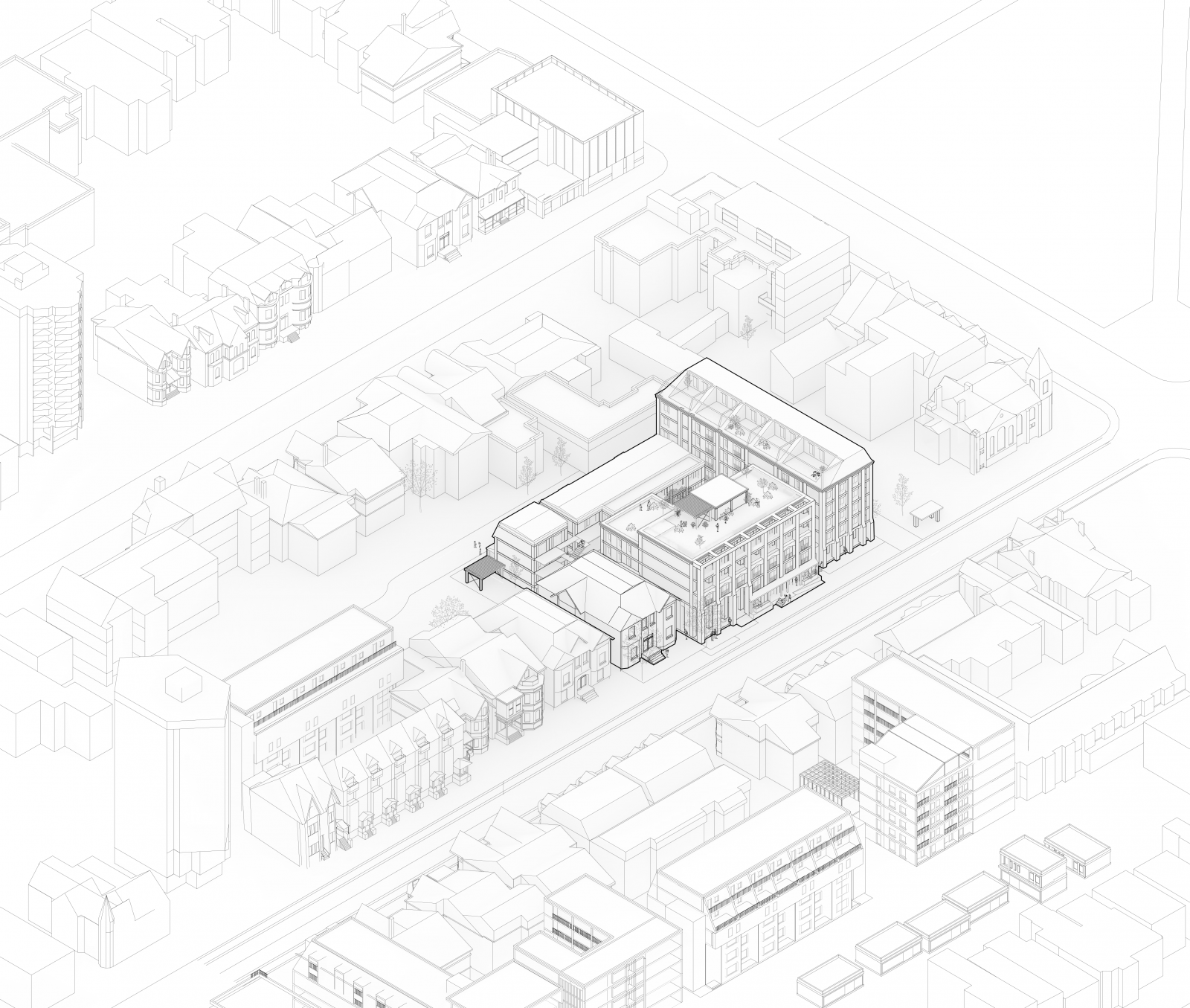
Current sustainable architecture is predicated on a misunderstanding of energy, which presupposes all buildings to be closed and isolated systems as opposed to open systems that energetically interact with their surroundings. The current approach involves insulating buildings from the energy around them and relying solely on internal systems. This project instead uses the building as an energetically active component of its surroundings to harness and convert the surplus of available energy.
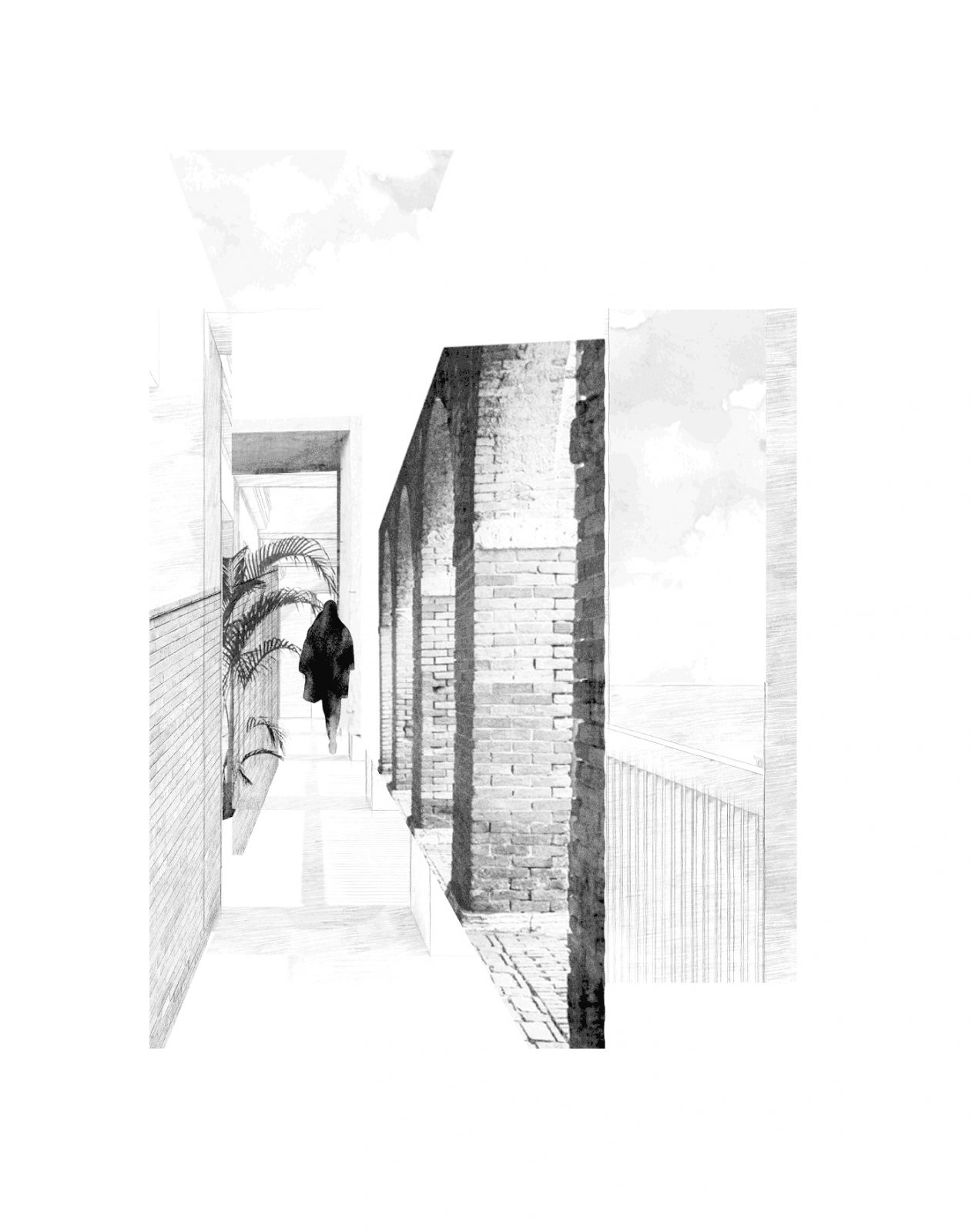
In an open building system, maximizing useful energy becomes the goal. Massive construction, in this case, brick, maximizes the potential of a single building material to do as much useful work as possible. Designed properly, brick can be an effective building structure, enclosure, “mechanical system”, and finish. By using one material in a wall we reduce its complication, and can then dive into the complexity of the entire building.
Radiantly heated walls have a direct connection to the energy of the space outside their boundary. When you feel the warmth of the wall you inherently feel and understand it in a way that you can’t achieve from forced air. For thousands of years, humans were heated either by the sun or by fire. I propose we bring a piece of that history back into our daily lives; because it is so much more than just brick.
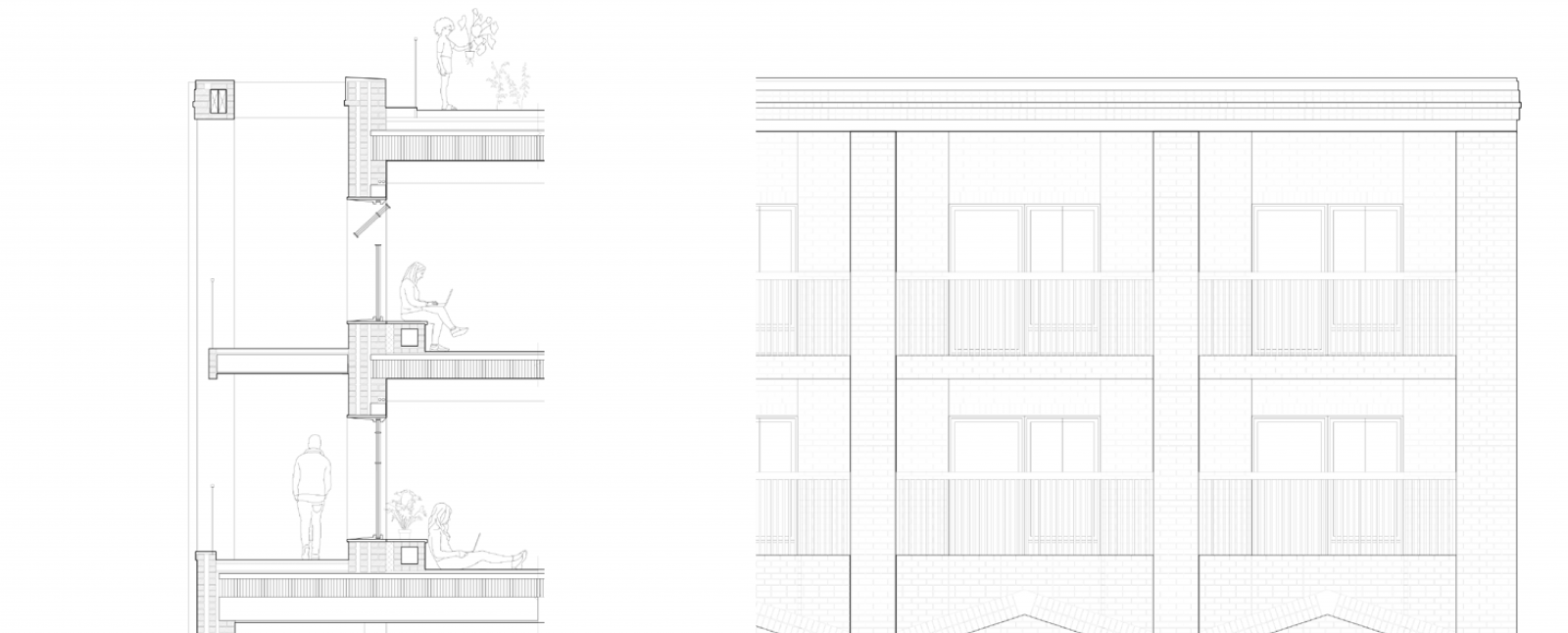

Sherbourne Corridor Co-operative, Ardy Chang
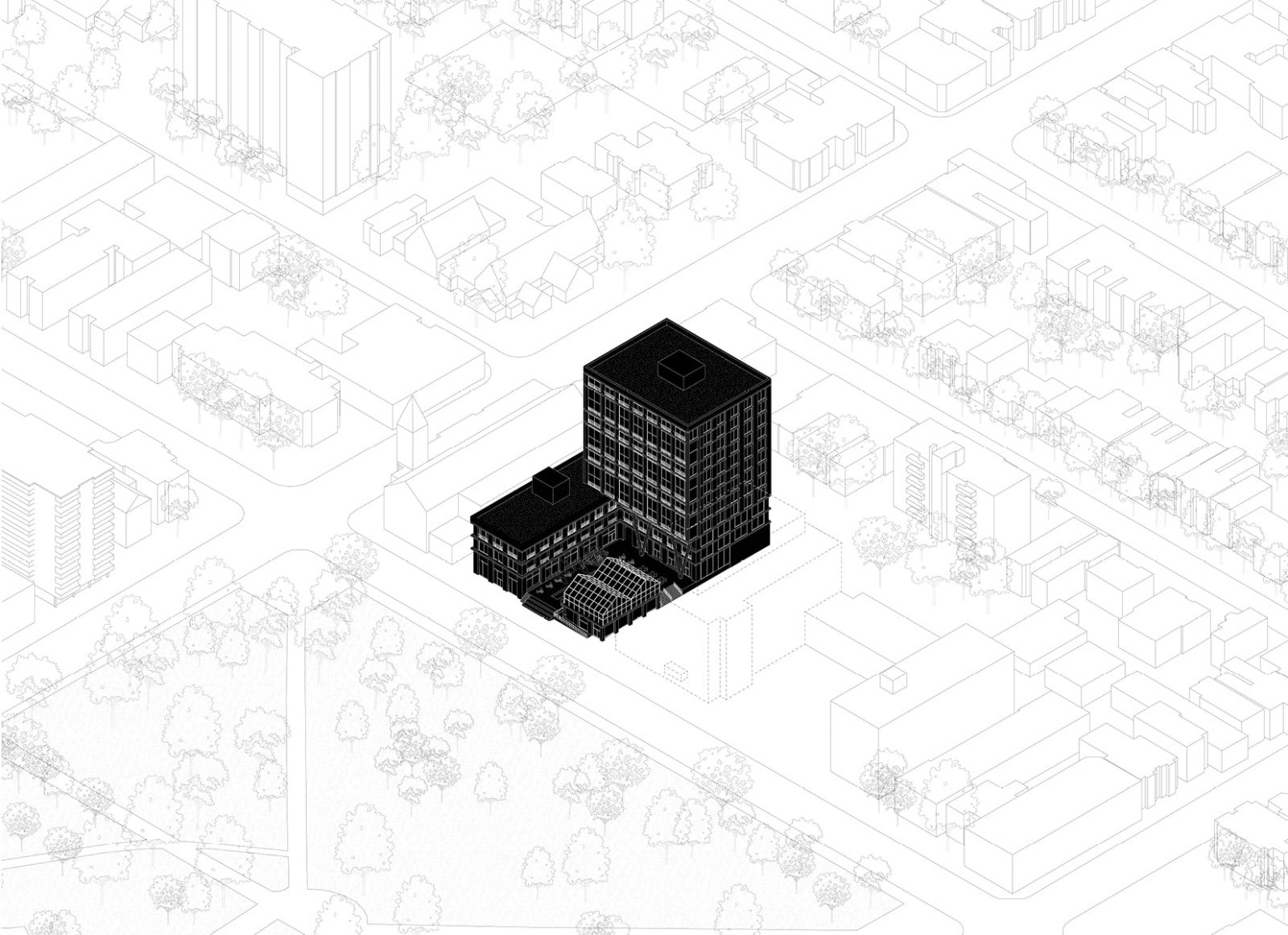
As current building practices become more preoccupied with energy efficiency, buildings have become isolated objects in their environments, concealing any thermodynamic potential they have. Instead of saving energy through multi-layered construction, the project aims for energy efficiency by building more simply.
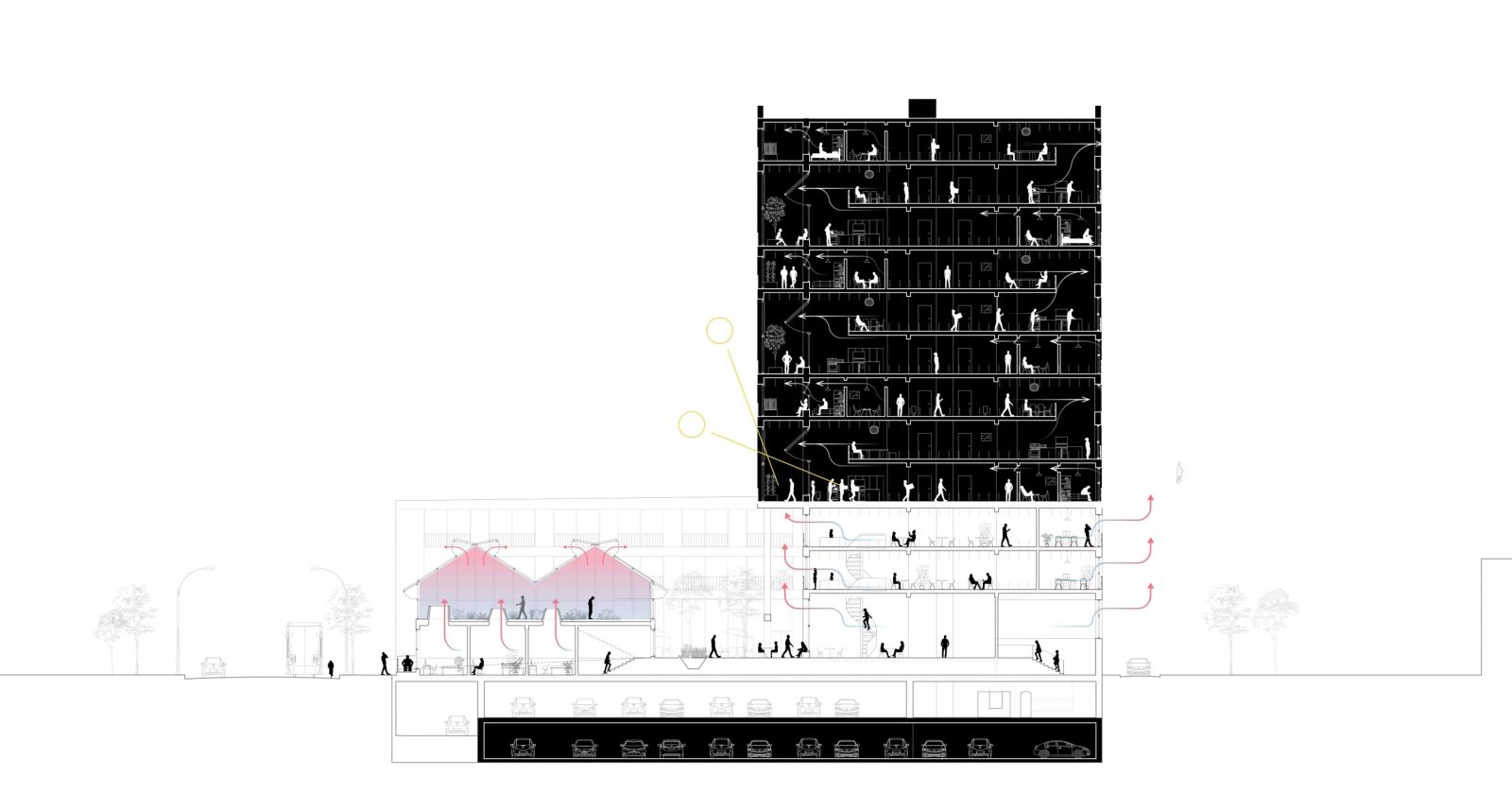
By choosing concrete as a material, a thermally active surface, coupled with a radiant heating system, heat can be stored and transferred within its environment more effectively. Additionally, the project’s use of concrete can amortize initial embodied energy costs throughout its long life span, as opposed to using higher maintenance, low life-span materials that consume more energy over time. By using massive materials that originate from the earth, we can construct simple yet high-performing buildings. This is moving towards a non-isolated means of architecture.
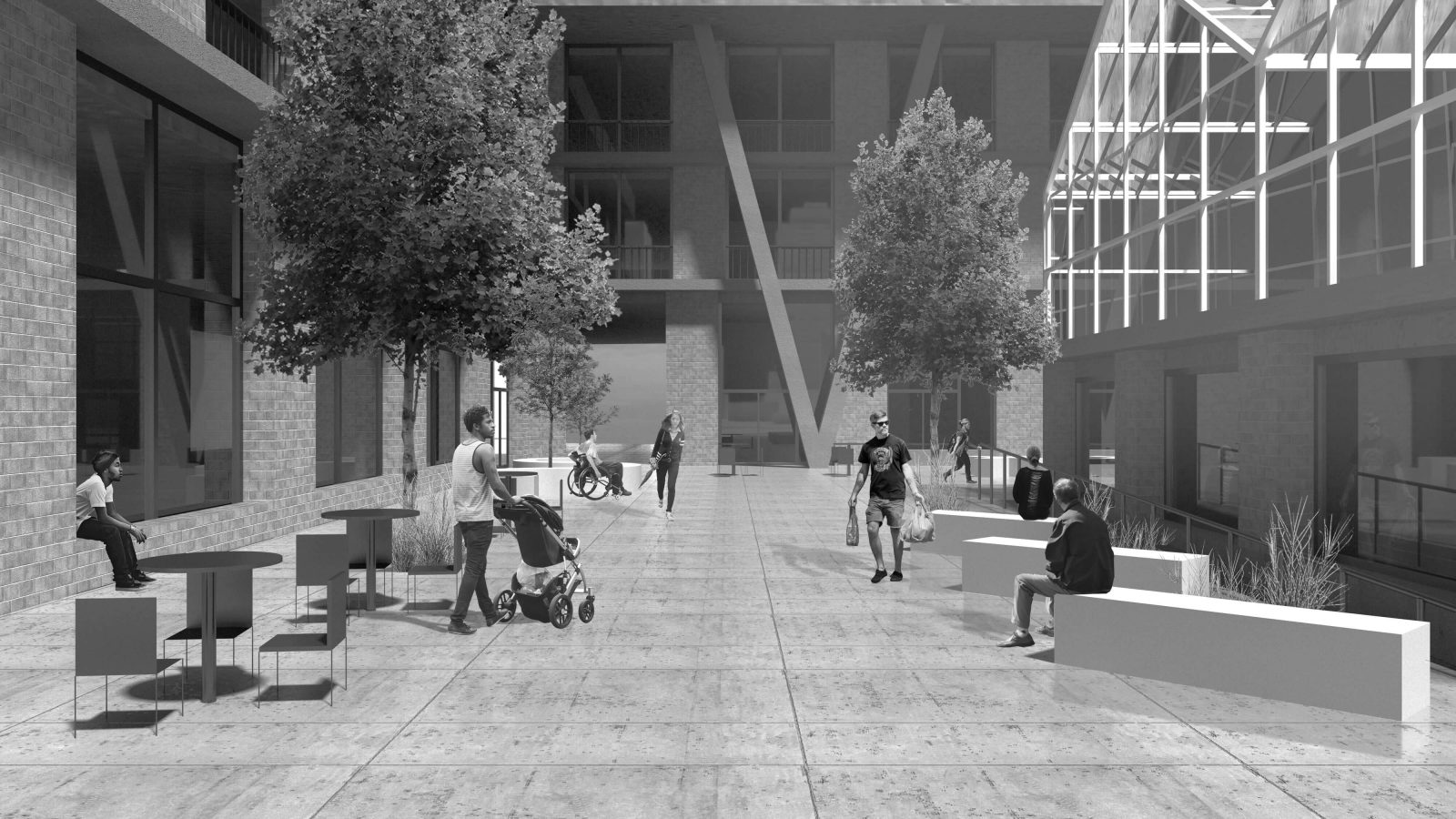
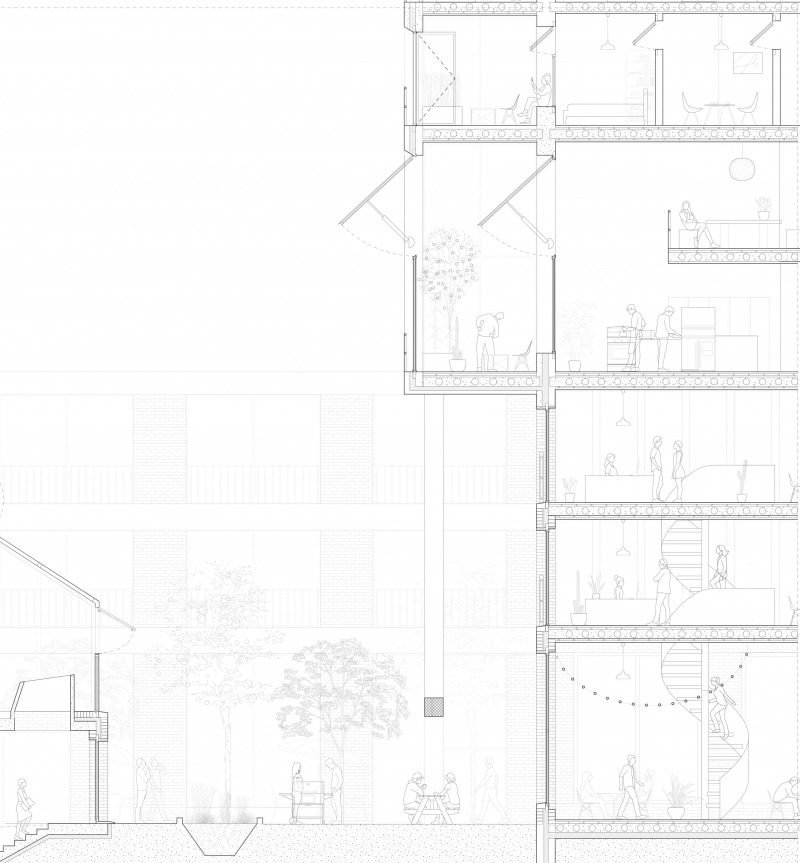
Cycles of Steel
Sherbourne Commons, Byron Cai
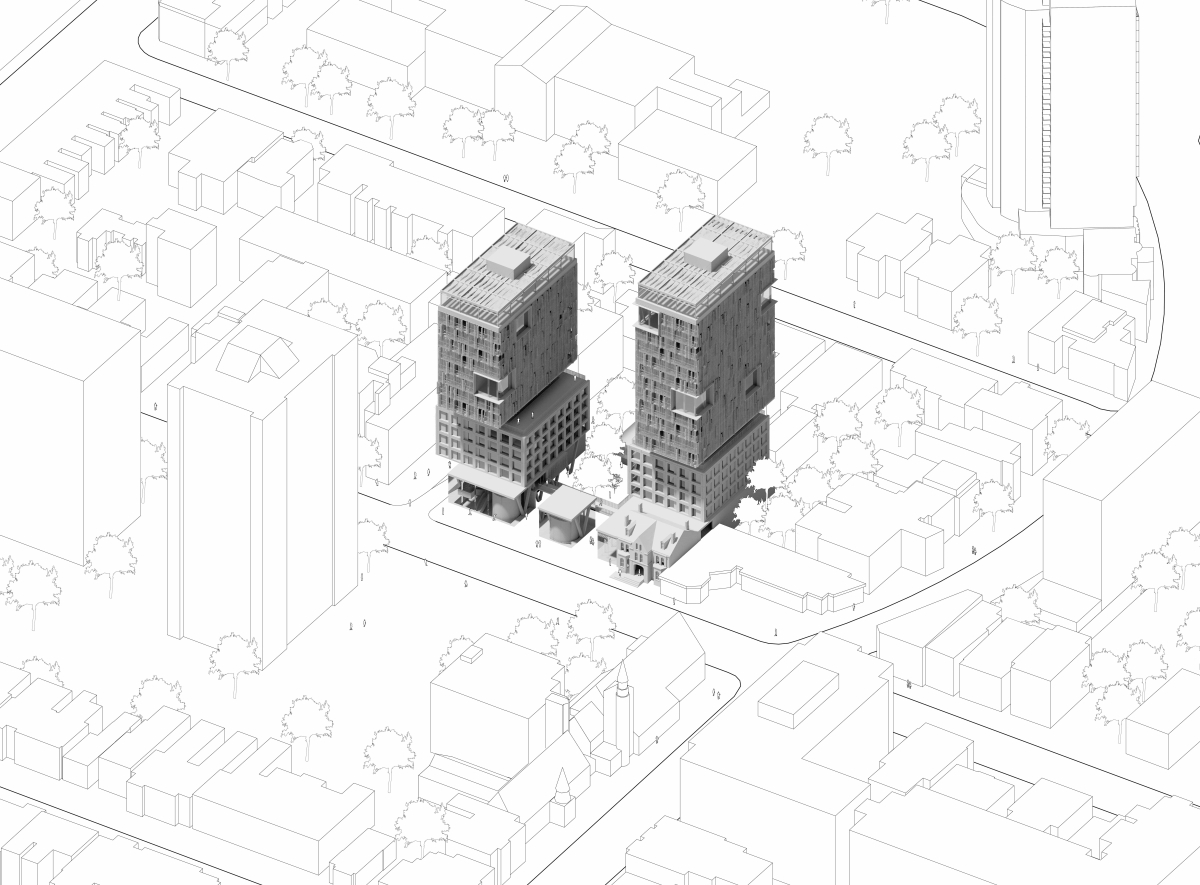
Sherbourne Commons establishes a unique yet community-oriented design, that encourages a greater notion of what a development in the downtown core could be – a place for learning, cohabitation, and social encounters.
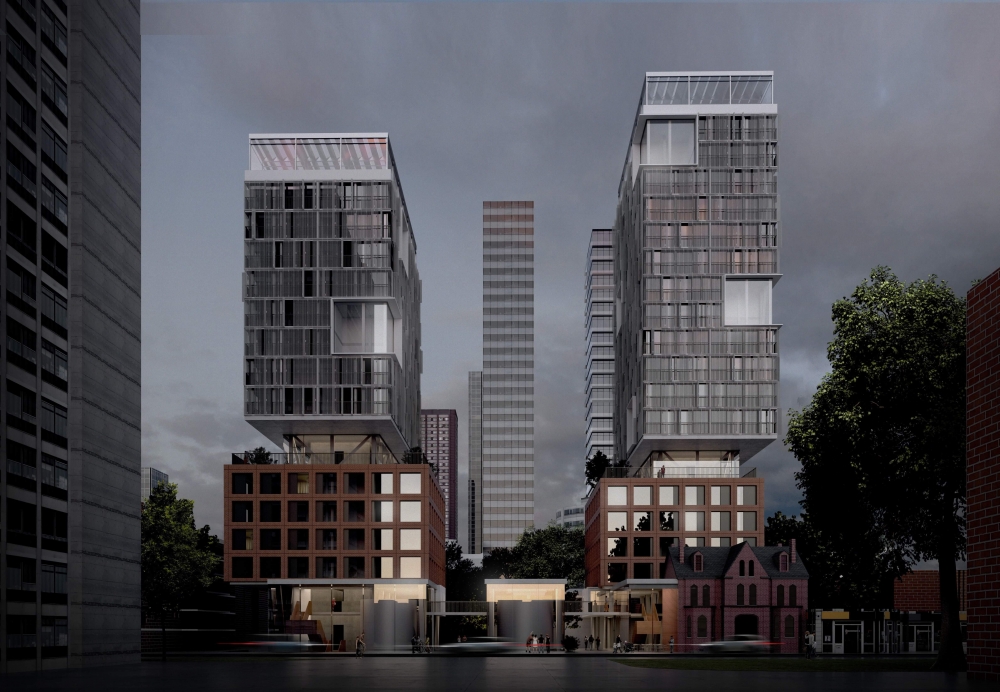
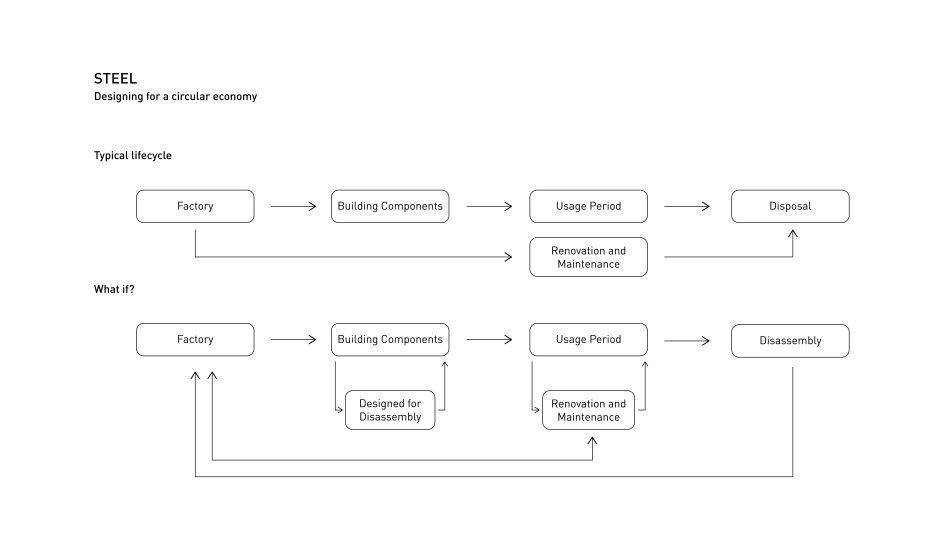
The building industry is responsible for up to 40% of materials produced globally and 35% of the world’s waste. Architects have the power to design buildings to reduce the impact of the built world on the environment. Sherbourne Commons maintains a simple structural steel grid, allowing the structure to be easily modified or disassembled at the end of its lifecycle. The use of steel presents further environmental advantages. Its prefabricated nature reduces on-site waste and construction time. At the end of the building’s life, the steel superstructure can be recycled for future building components.
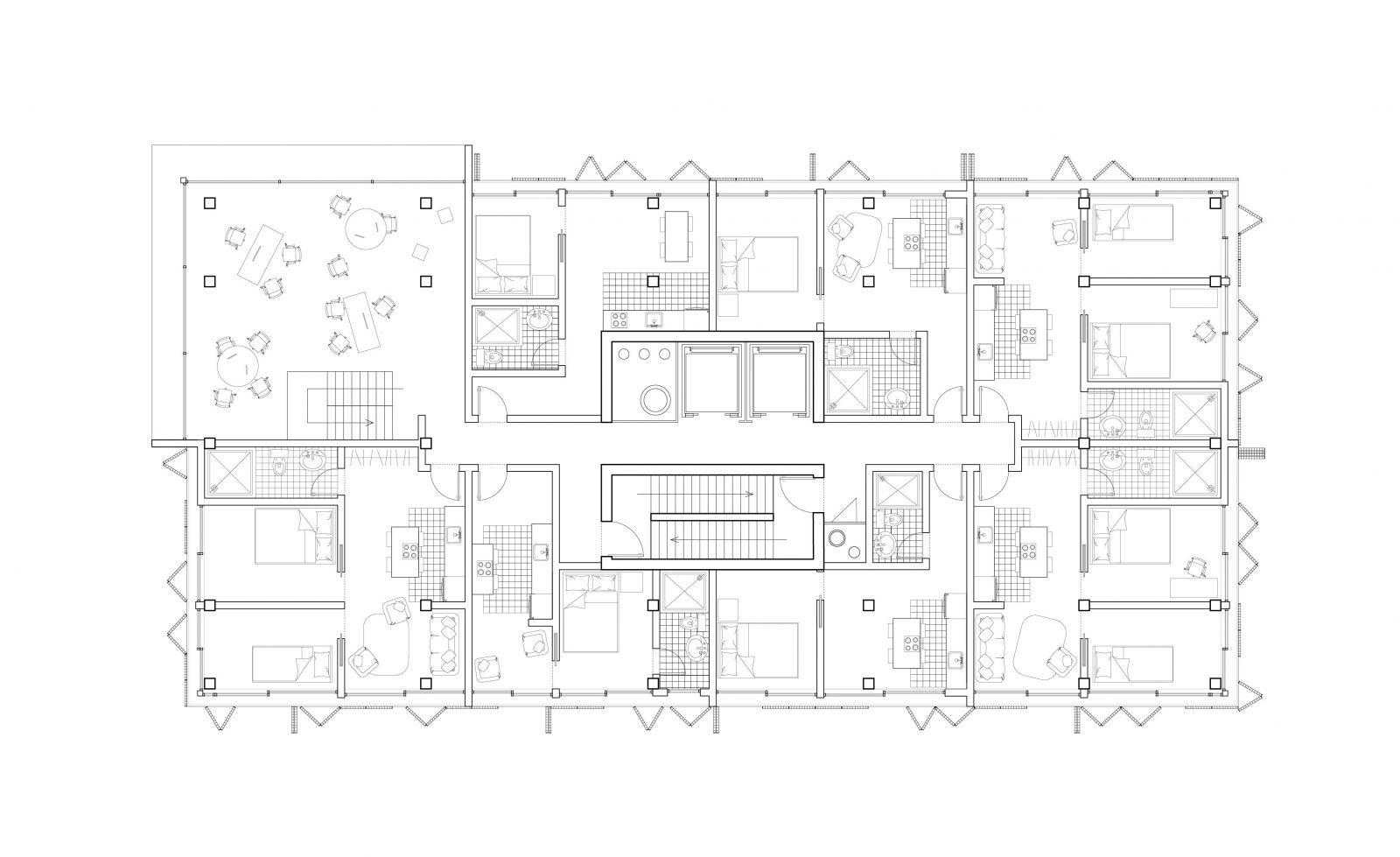
Sherbourne Corridor Co-op, Bill C.M. Tang
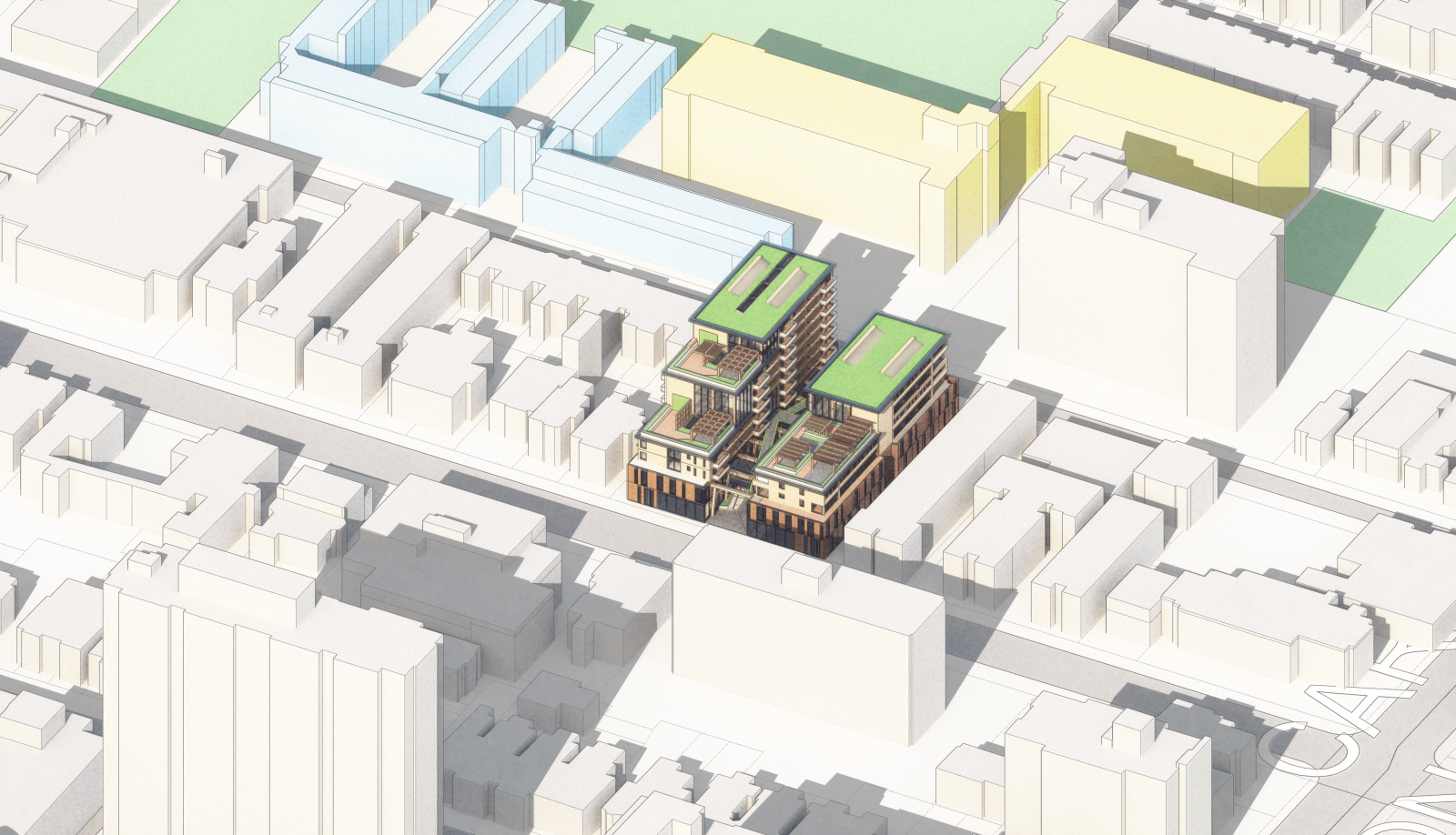
401 Sherbourne expands on a rich neighborhood of established co-op communities located between Wellesley and Carlton. It embraces co-operative housing as both a strategy to combat the commodification of housing, and a framework towards building an active local community.
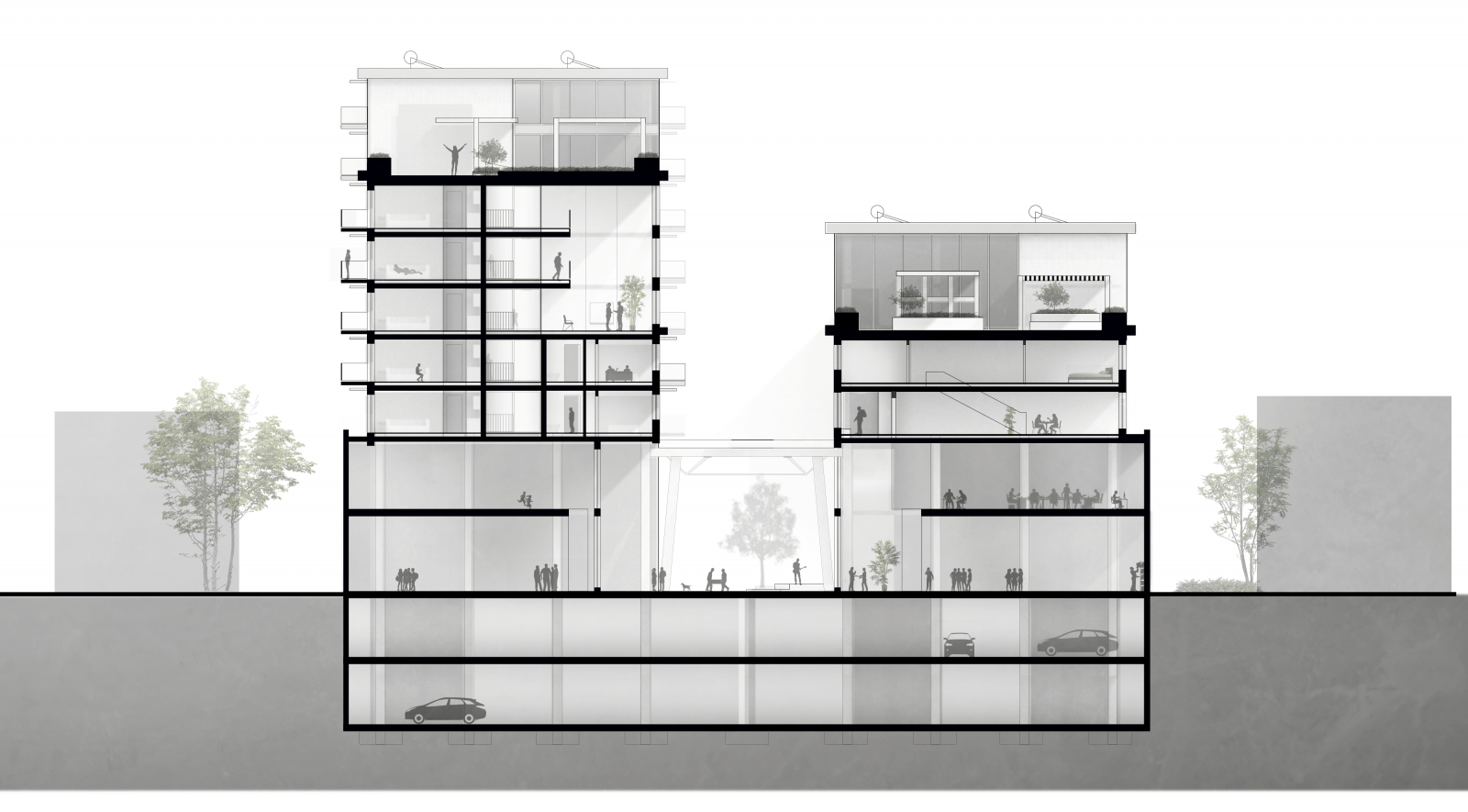
At the center of this project, is a sheltered street, which brings the sidewalk in the building: an arcade which connects Sherbourne and Bleecker streets.
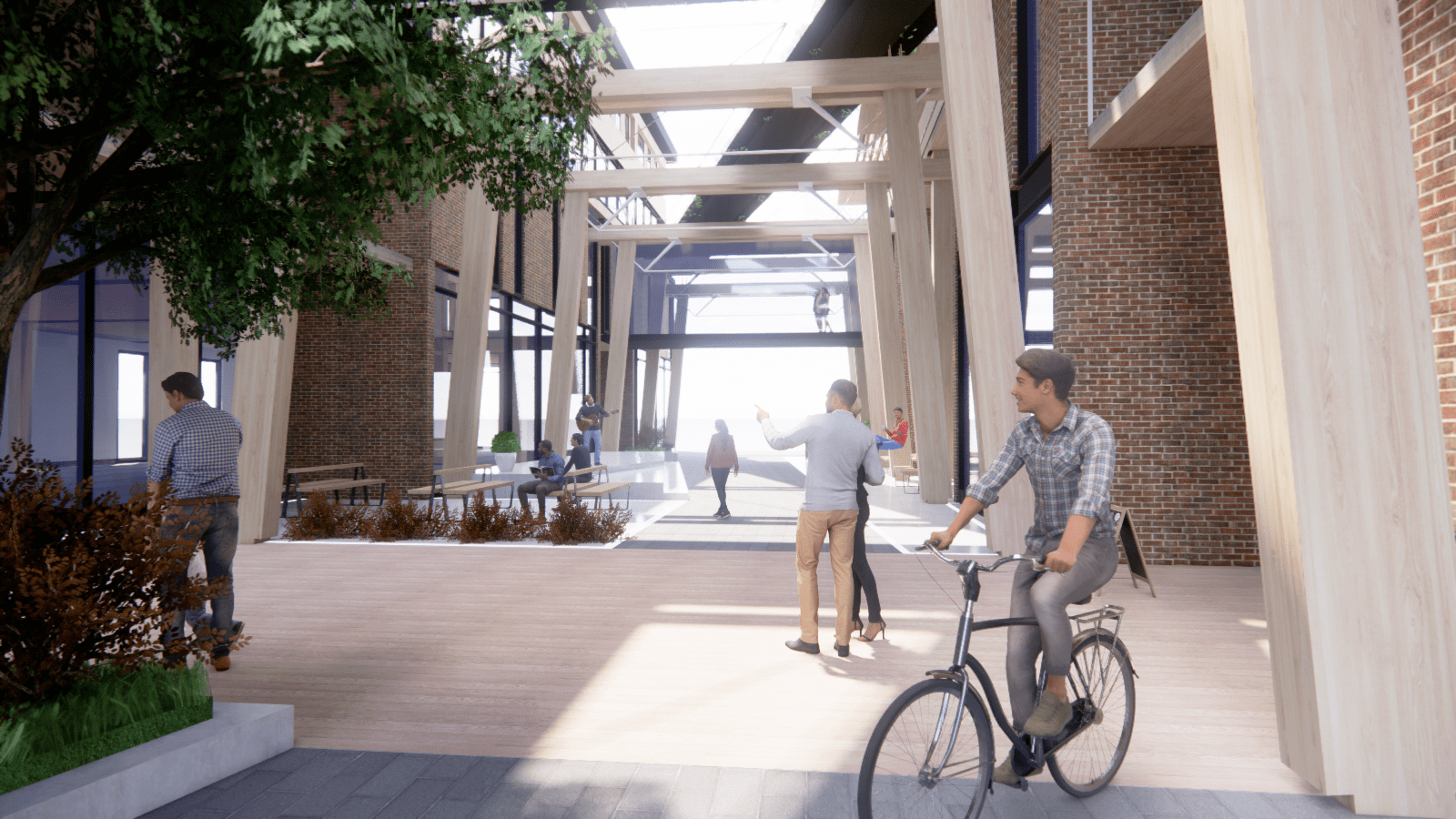
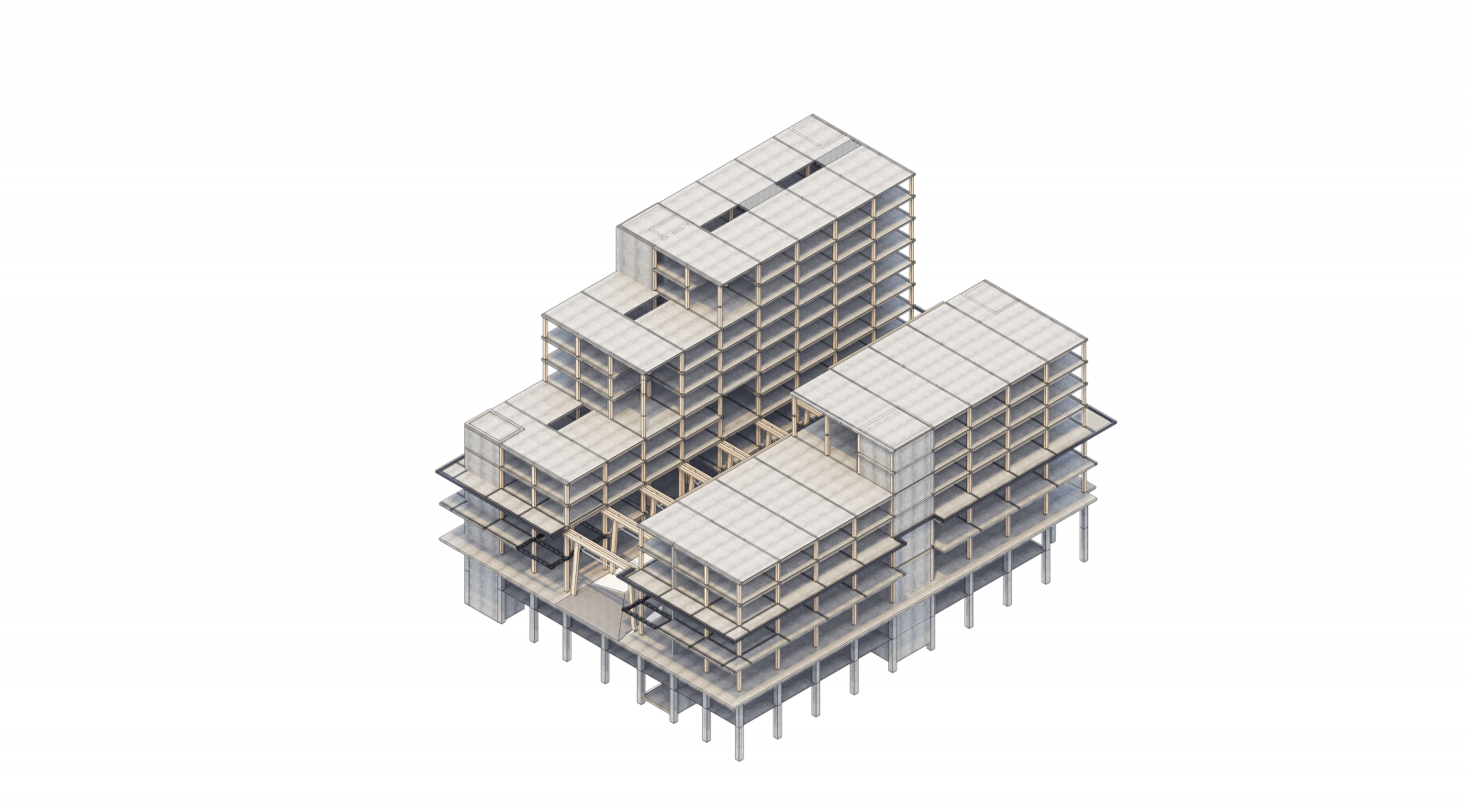
The structural system is a wood and steel composite. Glulam columns support steel deltabeams (a proprietary product), or a built-up, gravity beam (non proprietary alternative). NLT or Dowel laminated timber panels in turn span between the steel beams, supported on the bottom flange. The slab is further reinforced by a concrete topping, made structural through the use of composite screws. The composite allows for structural efficiency while minimizing the use of concrete to where it is necessary. Embodied energy is low, pre-fabrication is possible and the structure is lightweight.
The Warmth of Wood
294 Sherbourne, Nicole Chen
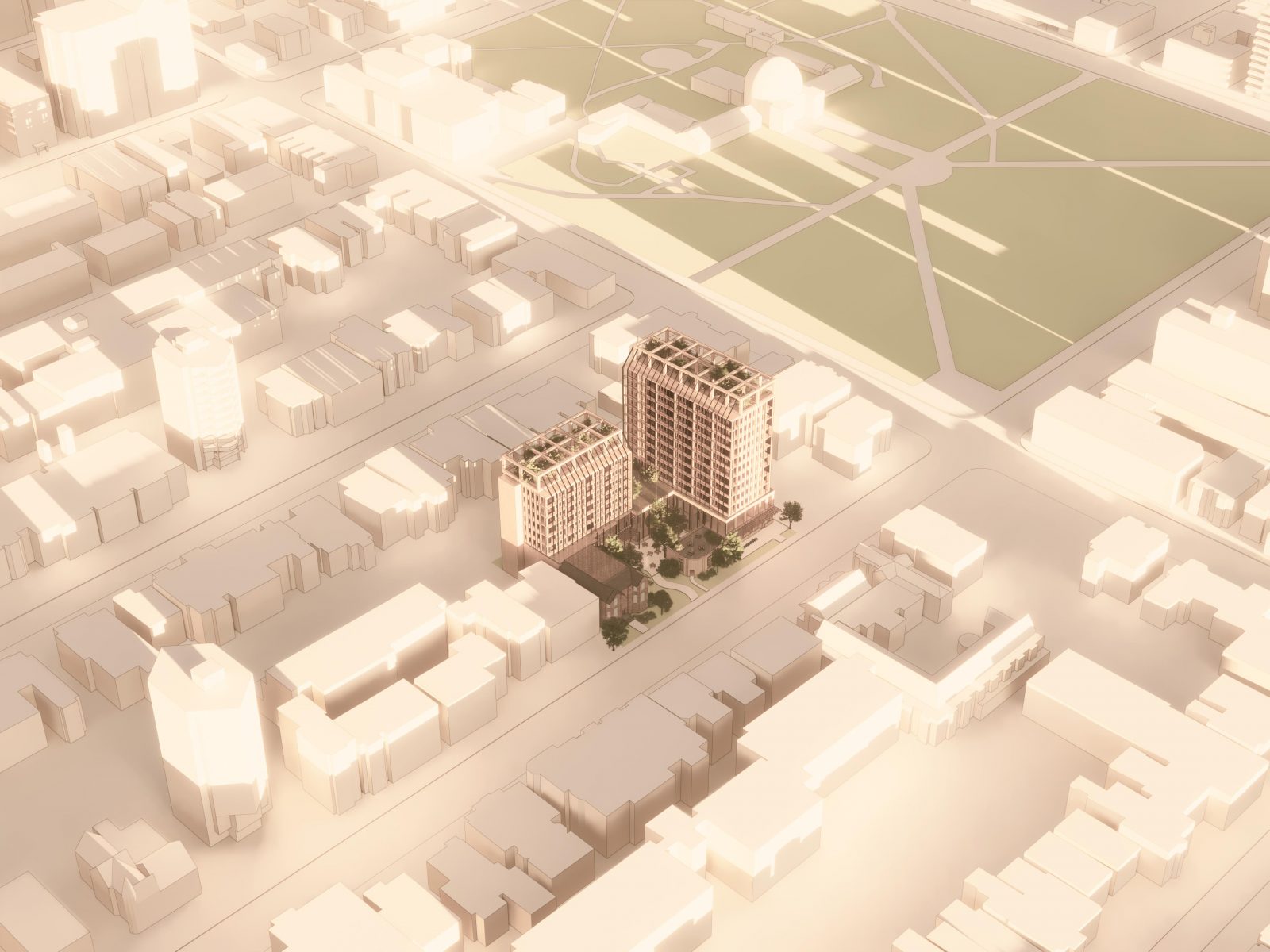
294 Sherbourne is a transitional home for women that integrates several supportive public programs to create a campus for learning, social support, and community. Female homelessness is on the rise in Canada. Poverty, domestic violence, lack of affordable housing, pay inequity, and likeliness to head single-parent households are factors that all contribute to female homelessness. This project aims to foster a sense of safety, reduce stress, and imbue hope for these women.
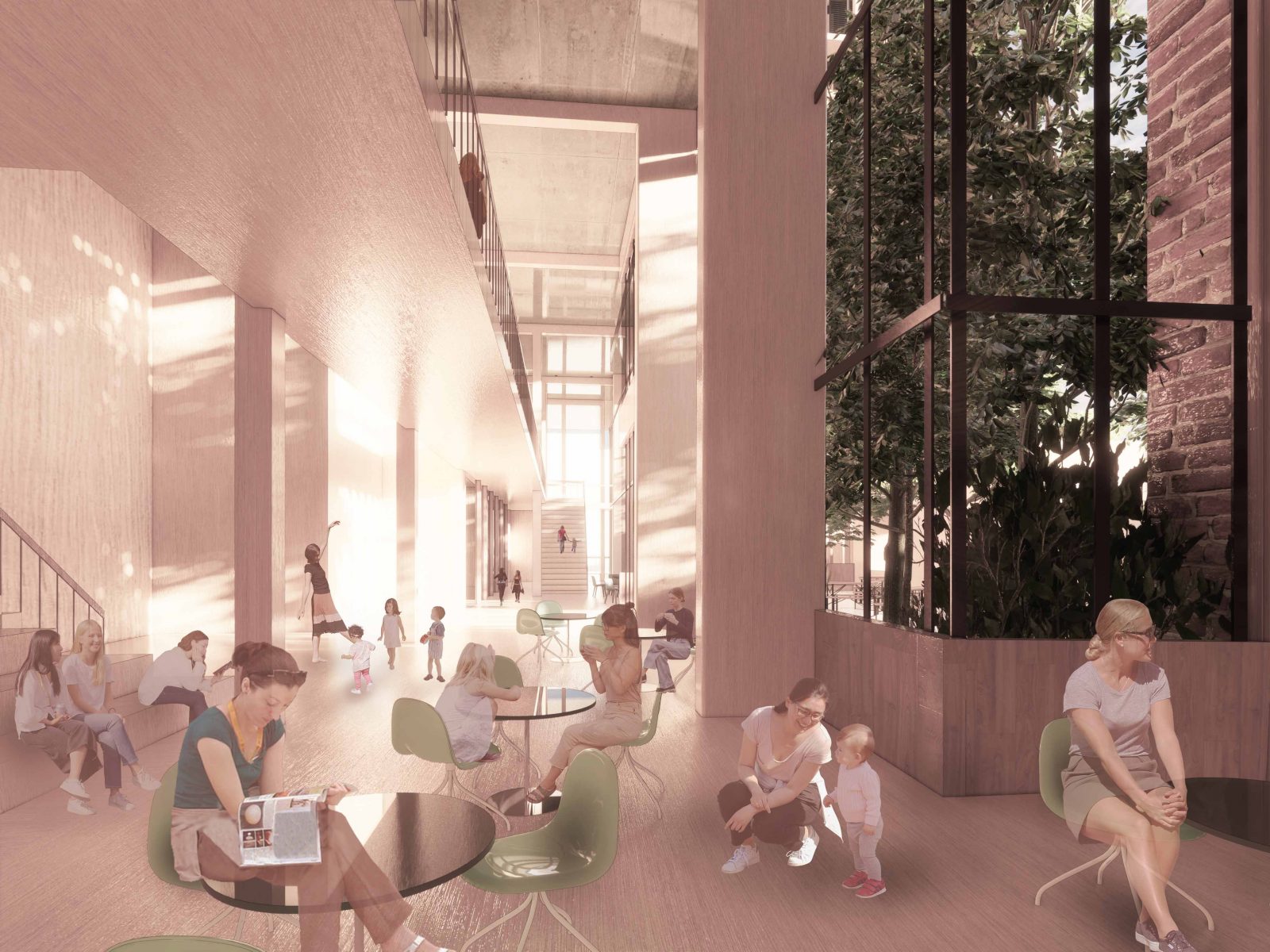
Mass timber is used as the main building material for its proven positive effects on psychological well-being. A glulam column grid structure allows for programmatic flexibility and the creation of open, light-filled spaces. As the sunlight fills the wooden interior, inhabitants experience the warmth of light and material.
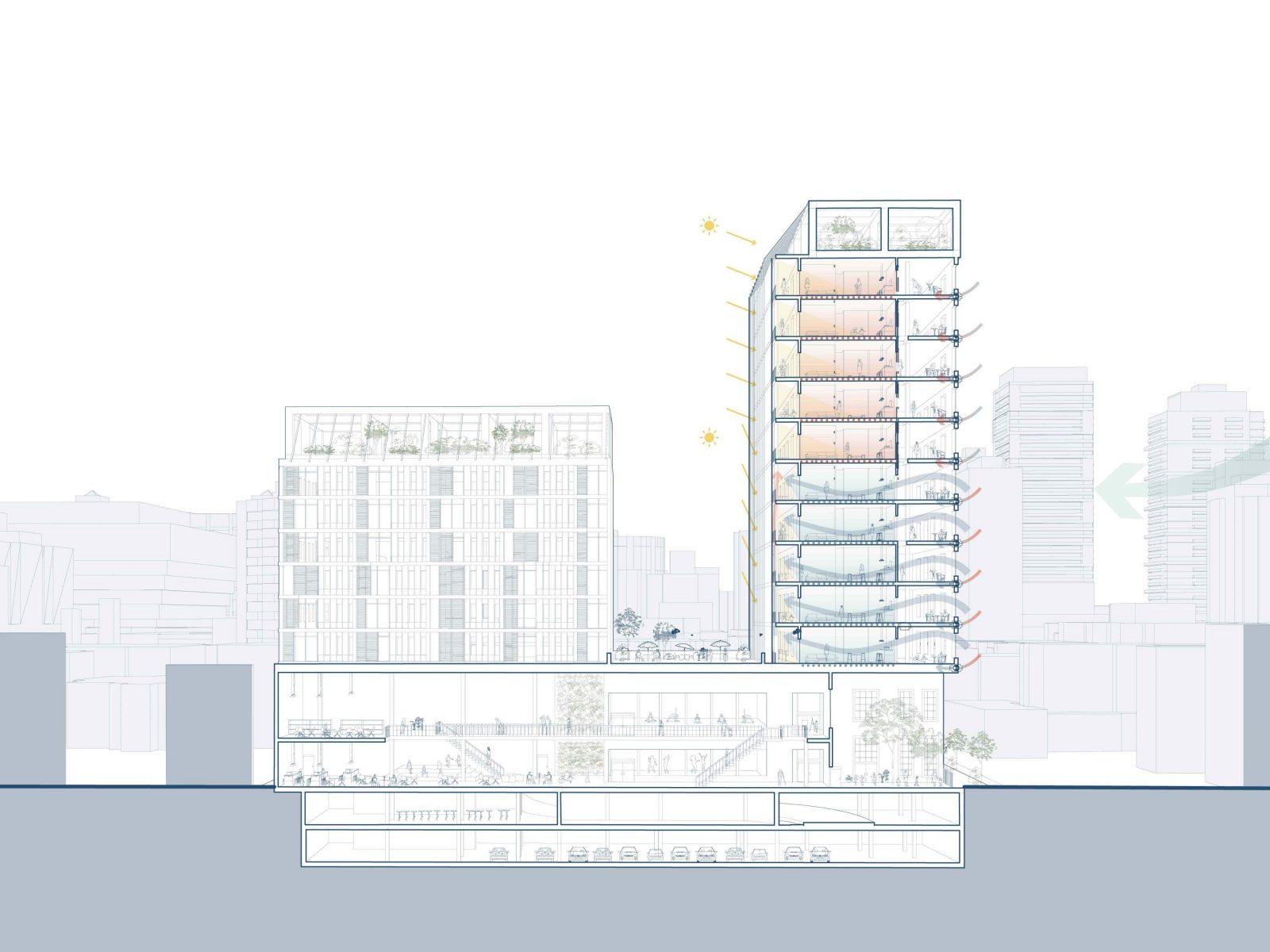

Hearten, Daniel Beg

The Downtown East is the host of an unabashed material honesty. Through its history as a middle to lower class neighborhood, buildings are easily split into their respective epochs by material: Hearten represents the future. With a consciousness to the environment, the project utilizes mass timber to celebrate the material’s strength and carbon efficiency. Users are first confronted by the charred-wood façade and, more significantly, the transparent solar chimney which spans the south face of the tower.



The transparent ground floor reveals the mass-timber columns and the transfer-trusses in the adjacent gymnasium. Hearten hides little, in hopes of honest and creative use and reuse of the building, always true to the familiar texture and warmth of wood.



![[SWAG] October Meeting Minutes](http://waterlooarchitecture.com/bridge/wp-content/uploads/2013/06/swag_logo-e1410273844246-300x200.jpg)

Leave a Reply